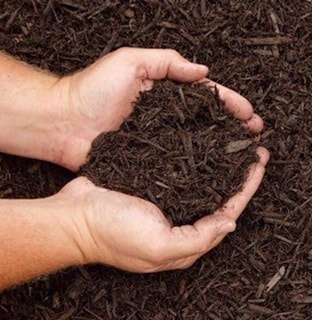
Using mulch is a highly effective way of suppressing weeds and minimising water loss. There are however some important considerations when determining which material to apply and when to apply it.
Mulch works by creating a layer of insulation on top of the soil. This is ideal in the summer months when the garden is often at risk of drying out. Keeping the soil cooler and retaining as much moisture in the soil as possible is great for plants as well as reducing the need to replace lost water, saving water usage and time watering.
In winter however, the insulating properties of mulch can become more of a hindrance rather than help, as it creates colder temperatures in garden beds than those that are not mulched. Frost settles on mulch in winter. During the day, the mulch insulates the soil in the same way that it does in the summer, creating a buffer from the sun. While this is welcome when temperatures are fierce, in winter when any heat is welcome, the mulch can ‘lock out’ the warmth, keeping the ground cold. In addition, at night when the ground is often warmer than the air above, mulch will minimise the soil’s warmth escaping, resulting in colder temperatures above the soil, thereby increasing the risk of frost damage.
Consequently, mulch is best used when temperatures are warmer. The best time to apply mulch in temperate and cool temperate Australia is late winter and early spring, when soil usually has most moisture content and the risk of frost has passed. Spring is a time when weed growth takes off, so ensuring beds are mulched just prior to this is a great time-saver. Avoid mulching once the ground is dry as a layer of mulch can create a barrier that makes it harder for water to penetrate the soil. It is advisable to water the soil very well prior to mulching, then either add mulch to a wheelbarrow filled with water to ensure it is well soaked prior to adding it to the garden, or water it in very well, checking under the layer of mulch to see that it is not dry underneath.
Depending on the type of mulch used, it can also add nutrients and improve condition to the soil. Organic mulches such as lucern, pea straw and sugar cane mulch break down relatively quickly, aiding the structure and composition of the soil. In soils with a high clay content, such mulches will help aerate the soil giving it a more ‘friable’ or healthy crumbly texture over time. This is optimal for plants. Similarly, in sandy soils, these types of mulches add organic matter and boost the way such soils nourish plant life.
In areas where there is a high risk of bushfire, inorganic mulches such as gravel can be beneficial as they retain moisture, but do not providing a flammable surface.
A mulch commonly used is wood chips, sometimes referred to as ‘tan bark.’ As a general rule, the larger the pieces, the more easily moisture can infiltrate the soil. While wood chip mulches don’t add any nutrients to the soil, they can significantly suppress weeds and hold moisture as well as taking far longer to break down than other organic mulches. If soil is of good quality and the plantings are not particularly hungry (unlike vegetable gardens), these can be a good, cost effective mulching option. One word of caution however, if the wood chips are very fresh (trees recently chipped) they will draw nitrogen from the soil, which is not helpful. Using aged wood chips is a much better option.
Finally, the use of ground covers is sometimes referred to as using ‘living mulch.’
Low, evergreen plants such as Myoporum parvifolium, Ajuga reptans and Dichondra repans keep weeds at bay, whilst keeping the soil insulated. The type of garden, amount of light/shade and moisture all need to be considered when selecting ground covers to perform this function.
